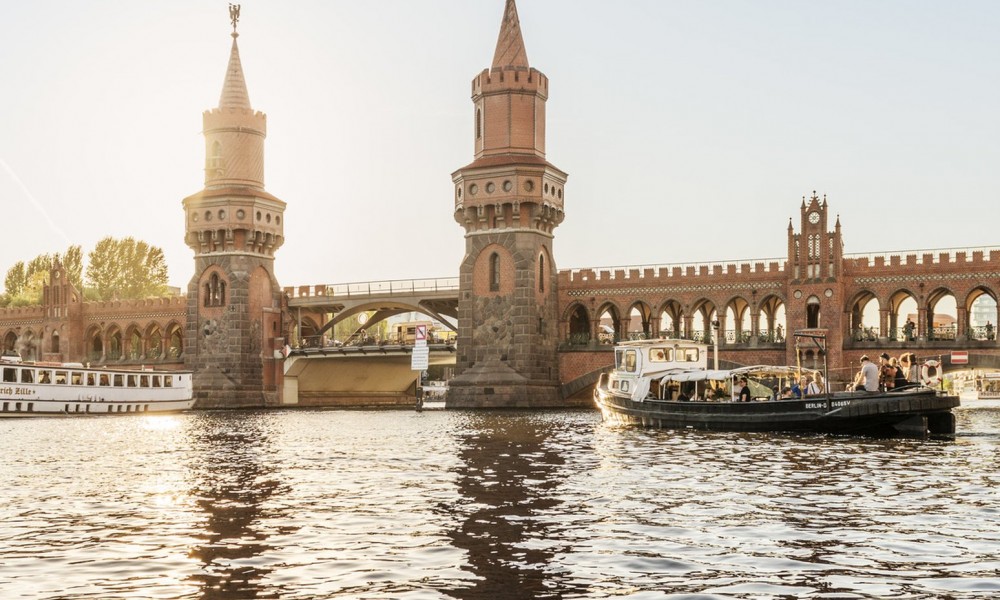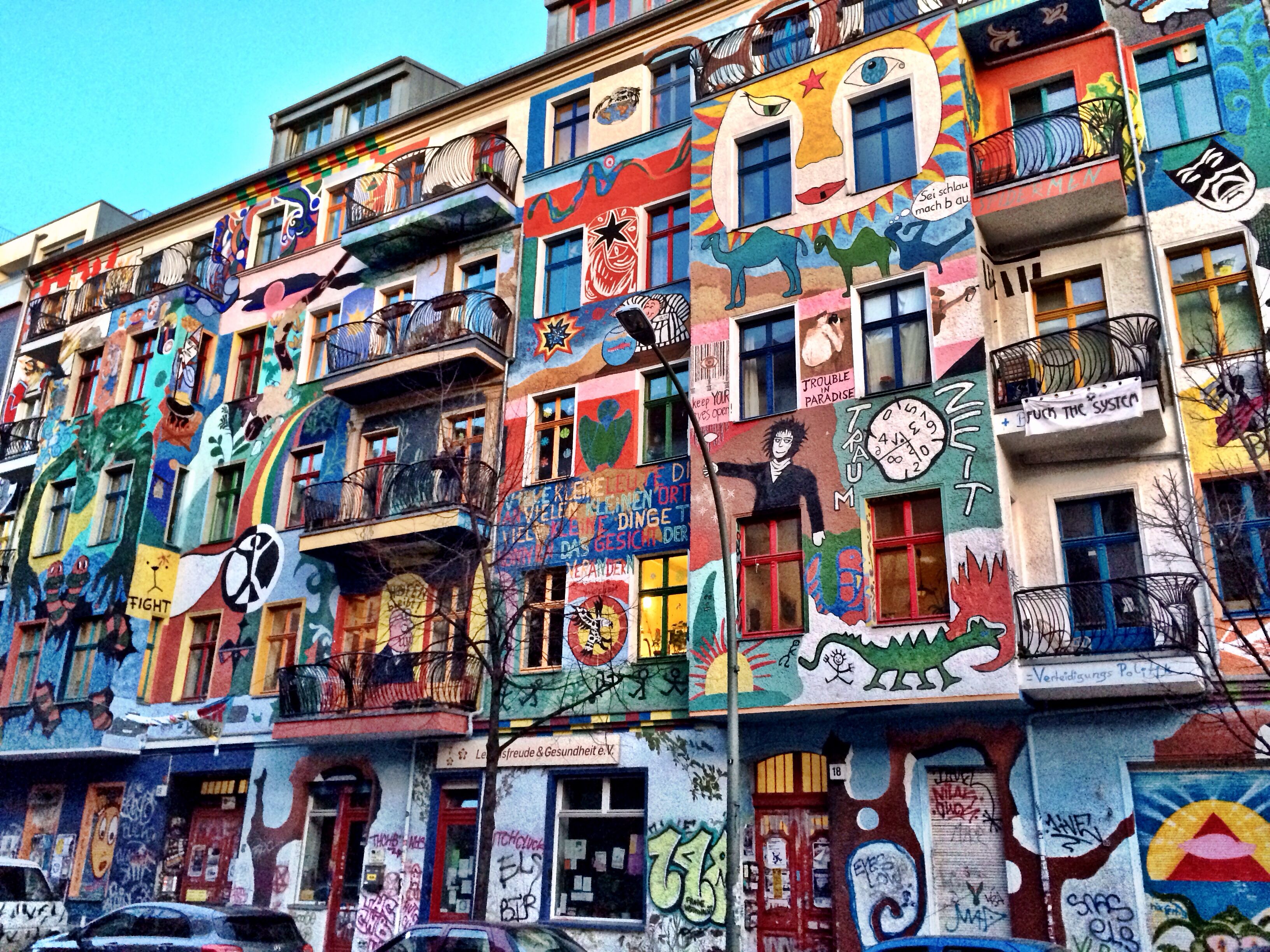Kreuzberg - The little Istanbul

It so happened that after the sadly known division of Berlin, its historical green (which survived to this day) area near the hill of Kreuzberg appeared to be eastern edge of the western part of the city. And as it often happens in such cases, this border zone became home for not the most law-respecting citizens like drunkards, pickpockets, guns and drugs dealers, illegal immigrants. Apart from them, by the way, there were only artists and intellectuals, who are never scared by the mentioned neighbours. Authorities were quite comfortable as almost all "unreliable guys" lived inside one ghetto, and the police could control the situation.
At the same time, around the 60s-70s of the last century, Germany has signed an agreement with Turkey and the unemployed but physically strong and skilled residents rushed to Germany to work, mainly in the construction industry. Migrants tried to settle close-together, next to their co-patriots. And the cheapest option in terms of rental housing in the capital was nothing else but Kreuzberg. Those Germans who have not moved out, were glad to let or sold their property, hoping to move from the hot spot village. Photo tinggly.com
Photo tinggly.com
However, in the late 80s the Wall fell, criminals dispersed throughout the country, and it so happened that at the heart of the great city emerged the area almost entirely populated by the Turks. Most of them not only refused to go back home, but taking advantage of the reunification law, relocated their relatives to Germany. So now the tourists who pop up at stations of Kottbusser Tor or Görlitzer Bahnhof shall be ready to see another Berlin, or rather Little Istanbul.
Tea shops, stalls with delicious kebabs and shawarma for three Euros, black-taped pub windows (so one can drink), street music, belly dance championships – all that breaks the cliché of "boring and pedantic Germany". Generally, this area is a cherry on cake of the "German multikulti". Now no one will say with accuracy how many Turks live in Germany. Officially it is 3.5 million, but the thing is that many of them have received citizenship generations ago, and their children have much better command of Goethe language than of their native tongue. Just have a look at Bundesmanshaft, football team, champion of the latest World Cup: Özil, Gündogan, Mustafi are not the Aryan names, right? Photo pinterest.com
Photo pinterest.com
See also: On the catwalk: Germany
This mixture of the two nations in Kreuzberg feels like nowhere else. When on a Saturday night you go out to the Oberbaumbrücke bridge, the main happening place, you can see young people peacefully drinking beer, drawing graffiti, singing songs in two languages, sharing marijuana joint scent of which is recognizable attribute of the area. Simplicity and freedom still reign there, and housing though increased in price, is still available for visitors and rebellious intellectuals, modern Kreuzberg does not smell of crime. The writer of these lines personally walked along the subway line for several nights in a row and did not see anyone or anything threatening. Here peacefully coexist both the Turks continuing to arrive, and the German population that remained or even moved in, because life is fun there and just a doorstep to centre.
Every weekend bank of the Planufer canal comes alive with a real oriental bazaar, attracting shoppers from all over the city. Countless eateries, where products from bazaar have been transferred into culinary masterpieces, will not leave anyone indifferent. And no one shall miss a walk down Oranienstrasse with its bars and nightclubs, of which the most legendary is SO36 (zip code of Kreuzberg) once rocked up by Iggy Pop and David Bowie. After a stormy night, the morning should begin with the eastern healing soups which will raise and cheer up absolutely everyone who had a drop too much, next come mandatory objects for cultural tourism such as local synagogue, Gallery of Modern Art, Chamissoplatz loved by filmmakers. And all that comes against the backdrop of religious street art and hijabs. Photo everestate.com
Photo everestate.com
Today, the Turks are so used to living in Germany, that it is somehow even inappropriate to call Kreuzberg "national ghetto". Most of the young people of this Berlin neighbourhood hardly identify themselves with one country, even in spite the traditional upbringing and conservative Islam. Still, the years spent in the centre of cosmopolitan and tolerant capital are being felt. Everyone shall drop there because Berlin is not just the Brandenburg Gate and Alexanderstrasse. Have a look, at least try local shawarma (you can safely take it at any kiosk, because in order to get a license, the owners have to cook only high-quality food) after which any another one will seem just pita bread with meat...
Cover photo visitberlin.de





















